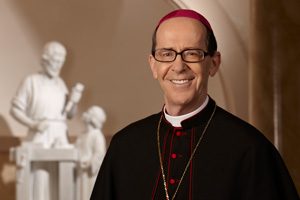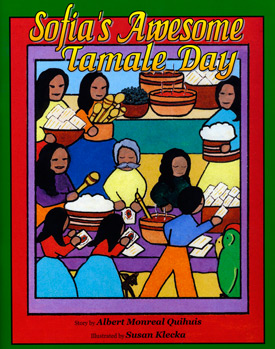Cantar la Misa — cuarta parte
En las tres primeras partes de esta serie hemos explorado el significado de la música sagrada, el papel de la Iglesia en preservar y fomentarla, y su papel en evangelizar la cultura. Ahora, en esta cuarta y última parte de la serie, hablamos de modos prácticos para profundizar nuestro uso de la música sagrada para una mayor participación de todos los fieles.
Que cantar en la Misa

La Instrucción General del Misal Romano describe la importancia del cantar en la sagrada liturgia y ofrece consideraciones prácticas. En el artículo 40 nos informa que “al determinar las partes que en efecto se van a cantar, prefiéranse aquellas que son más importantes, y en especial, aquellas en las cuales el pueblo responde al canto del sacerdote, del diácono o del lector, y aquellas en las que el sacerdote y el pueblo cantan al unísono”.
Pero ¿cómo vamos a saber qué partes de la liturgia de mayor o menor importancia? Musicam Sacram, citado en la GIRM, proporciona una instrucción útil a esta pregunta, dividiendo en tres grados las piezas para ser cantado en la Misa para ayudar a “los fieles hacia una participación cada vez mayor en el canto” (cf. MS 28-31).
La primera medida consiste esencialmente en el Orden de la Misa (los cantos cantado en el diálogo entre el sacerdote o el diácono y el pueblo). El segundo grado consiste esencialmente en el Ordinario de la Misa (Kyrie, Gloria, Credo, Sanctus y Agnus Dei). El tercer grado consiste esencialmente en el Propio de la Misa (los cantos cantado a la entrada, y las procesiones del Ofertorio y la Comunión, y el Salmo y Aleluya con su verso antes del Evangelio).
El Orden de la Misa
El orden de la Misa es la canción fundamental y principal de la liturgia. Forma parte de la Misa, que es de la mayor importancia, y por lo tanto debe ser cantado idealmente antes de cualquiera de las otras partes de la Misa se cantan. Cuando el orden de la Santa Misa es cantado, la liturgia se vuelve más fiel a sí misma, y todo lo demás en la liturgia se vuelve más bien ordenado. El orden de la Misa se estableció para ser cantado en nuestra nueva edición en inglés del Misal Romano. Ruego encarecidamente a todos los sacerdotes y diáconos para aprender estos cánticos y para alentar y ayudar a los fieles a participar en su canto con amor y devoción.
El Ordinario de la Misa
El Ordinario de la Misa, comprendiendo los cánticos del segundo grado, también es de su naturaleza destinado a ser cantado. El Ordinario de la Misa consiste de dos letanías penitenciales, dos himnos de la alabanza, y la gran profesión de la Iglesia de la fe, que son fijados dentro del Orden de la Misa y, según las demandas de la liturgia o temporada, forman una parte de la estructura incambiable de la Misa.
Aunque el Kyrie, la Gloria, el Credo, el Sanctus y el Agnus Dei pueden ser cantados a una variedad de ajustes musicales, la gran tradición de música sagrada de la Iglesia ha pasado a nosotros un tesoro inestimable de cánticos para la Misa Ordinaria. La edición reciente en inglés del Misal Romano sí mismo nos ha dado un ajuste musical “estándar” del Ordinario en la forma de cánticos en inglés y latín simples, incluso ajustes musicales del Credo. Aunque el Ordinario de la Misa puede ser cantado en la lengua vernácula, el Segundo Concilio Vaticano encomendó esto “anda debería ser tomado de modo que los fieles también puedan ser capaces de decir o cantar juntos en latín aquellas partes del Ordinario de la Misa que pertenecen a ellos” (Sacrosanctum Concilium 54).
El Propio de la Misa
El Propio de la Misa, que comprende los cantos del tercer grado, forma parte integral, pero sin embargo, una parte de la liturgia cantada menudo pasado por alto. El Propio de la Misa consiste de tres cánticos procesionales y dos cantos entre las lecturas del Leccionario. Estas partes de la Misa, que figuran en la edición del Misal Romano y Graduale Romanum, a diferencia del Orden de la Misa y el Ordinario de la Misa en que éstas no son fijadas e inmutables de un día para otro, pero que cambian según el calendario litúrgico, y por lo tanto son “propio” de celebraciones litúrgicas particulares.
Aquí encontramos la Antífona de Entrada, el Salmo Responsorial (o Gradual), el “Aleluya” y su verso, la Antífona del Ofertorio, y la Antífona de la Comunión. Aunque del Propio de la Misa es subordinado en el grado de importancia para el Orden de la Misa y el Ordinario de la Misa, los textos del Propio de la Misa forman quizás uno de los más grandes y profundamente ricos tesoros escondidos en la tradición de la música sagrada. Debido a que estos textos cambian de un día a día, fueron históricamente cantados por la schola cantorum, y, debido a sus demandas, se sustituyen a veces hoy por otra temporada o opciones adecuadas.
Los textos del Propio de la Misa, sobre todo los cánticos de la Entrada, el Ofertorio y la Comunión, consisten de antífonas bíblicas y versos de un salmo o cántico. Esta es la forma de los textos dados en el Misal romano, el Graduale Romanum, y el Graduale Simplex, las fuentes primarias de la Iglesia para el Propio de la Misa. El GIRM también tiene la posibilidad en cuenta de cantar cánticos de “otra colección de Salmos y antífonas, aprobadas por la Conferencia de Obispos o el Obispo Diocesano” durante las tres procesiones de Misa, y, finalmente, tiene el canto en cuenta de “otro cántico litúrgico que conviene a la acción sagrada, el día, o la época del año, de manera similar aprobada por la Conferencia de Obispos o el Obispo Diocesano” (Cf. Instrucción General 48, 87).
Los textos del Propio de la Misa, aunque son de menor importancia que los textos del Orden de la Misa y el Ordinario de la Misa, forman una sustancial y elemento constitutivo de la liturgia, y animo una recuperación de las que hoy se utilizan. Tenemos la bendición en nuestros días una especie de despertar a su valor. Además, muchos de los nuevos recursos disponibles que hacen que su canto realizable en la vida parroquial. Ruego encarecidamente a las parroquias a asumir la tarea de cantar las antífonas y a la salmodia contenidos dentro de los libros litúrgicos, y para volver a descubrir las inmensas riquezas espirituales contenidas dentro del Propio de la Misa.
Ofrezco mi más sincero agradecimiento a todos los párrocos, sacerdotes, diáconos, religiosos y laicos fieles que con entusiasmo estudian, fomentan y buscar nuevas formas de implementar la música sagrada en la vida de la Iglesia. Esta es una tarea constante, una parte esencial de la auténtica renovación litúrgica desde el Segundo Concilio Vaticano y un medio seguro de atraer a muchas almas a la belleza de Cristo, que nos invita en su interminable canción de amor al Padre.







